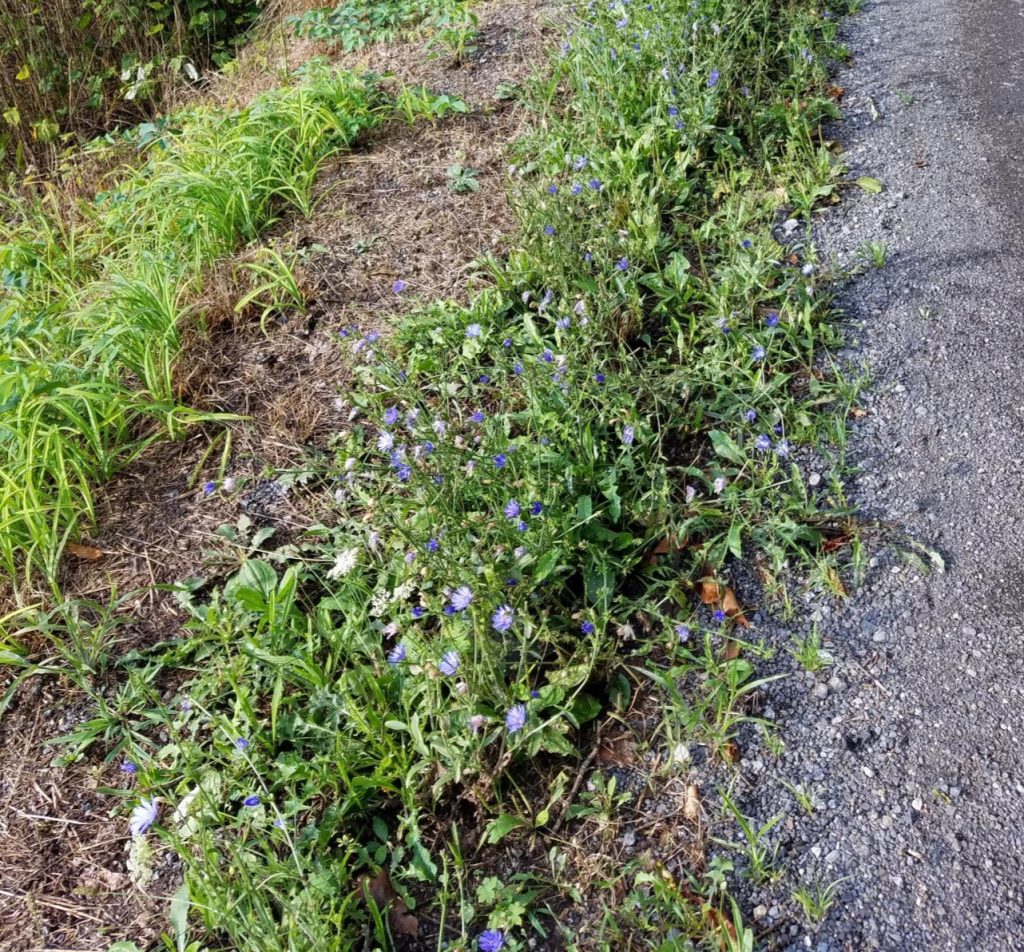By: Susan Sprout
Find out what’s underfoot with NPC member and environmental educator, Susan Sprout! Catch up on past issues of Underfoot: Introduction & Bloodroot, Trout Lily & Coltsfoot, Blue Cohosh & Dutchman’s Breeches, Ground Ivy & Forget-Me-Nots, Goldthread & Wild Ginger, Common Mullein & Sweet Woodruff, Aniseroot & Butterfly Weed, Myself , Jewelweed & Soapwort, American Pennyroyal & Great Lobelia, Boneset & Common Ragweed.
Pokeweed
Pokeweed’s four to eight foot height and large sprawling shape call attention to this native perennial plant.
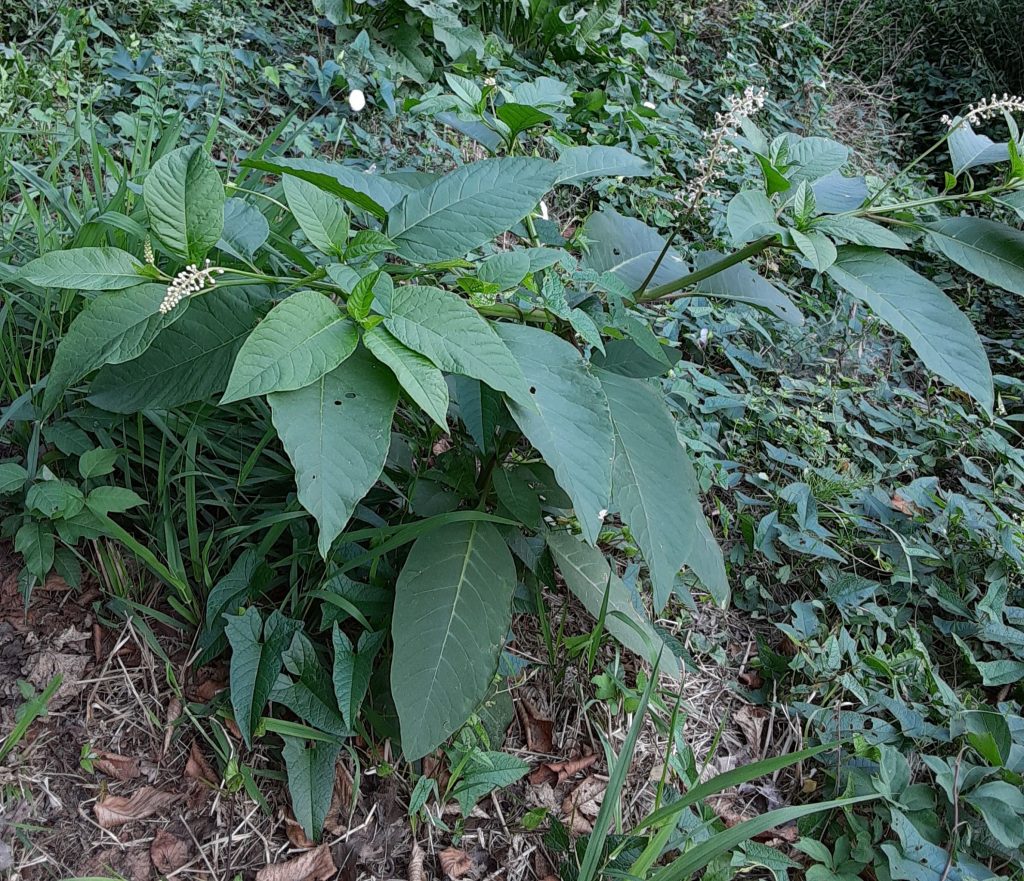
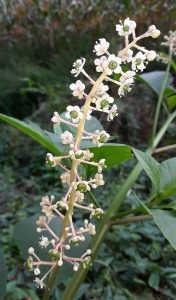
Common from New England to Florida and westward to Mexico, it grows in many waste places, fields, and even pops up in gardens, thanks to the birds who eat its purplish-black berries and deposit seeds here and there.
BEWARE! These berries and the whole plant itself is toxic to most mammals, including us! Youngsters and oldsters alike may be attracted by the berries. What fun to squish them and decorate faces and arms and legs with the magenta-colored juice! DON’T! The poison contained in the berries, leaves, stems, and roots can be absorbed by the skin. Ingested, it can cause respiratory paralysis and death. Through the years, people have used Pokeweed for food, medicine, ink, and dye. Use of it for any of these things today requires an expert.
On a positive note, Pokeweed’s toxins are being studied as a way to control zebra mussels, the invasive non-native mollusk species that has invaded freshwater rivers and lakes in North America.
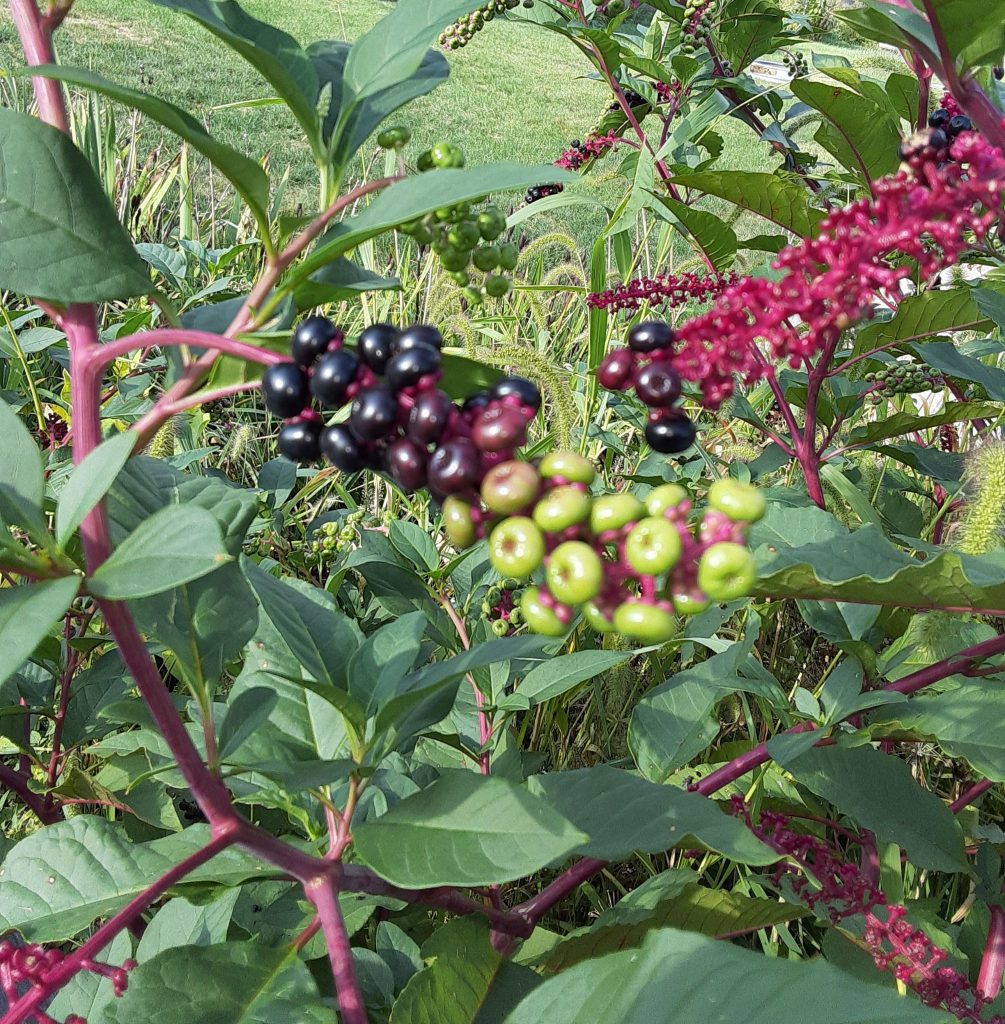
Blue Chicory
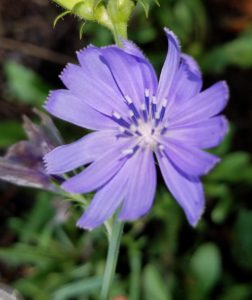
Chicory may go unnoticed growing along paths and roadways, especially on cloudy days or early evenings when its sky blue flowers have closed up. It is so common, it is overlooked and not given its proper respect! Many guess it is a native plant and are surprised to find out it originated in Eurasia and North Africa. The Egyptians grew it 5000 years ago. It was used as medicine, salad greens, and pot herbs by the colonists who brought it with them. It has been here so long, it has become naturalized…sort of like the colonists!
Look for the larger, toothed leaves toward the bottom of this perennial; they resemble dandelion leaves. As the stem grows, leaf sizes diminish toward the top, resulting in a naked-stem appearance. The blooms have petals with squared and toothed outer edges. They grow straight out of the sturdy stems and at the ends of short, stiff branches.
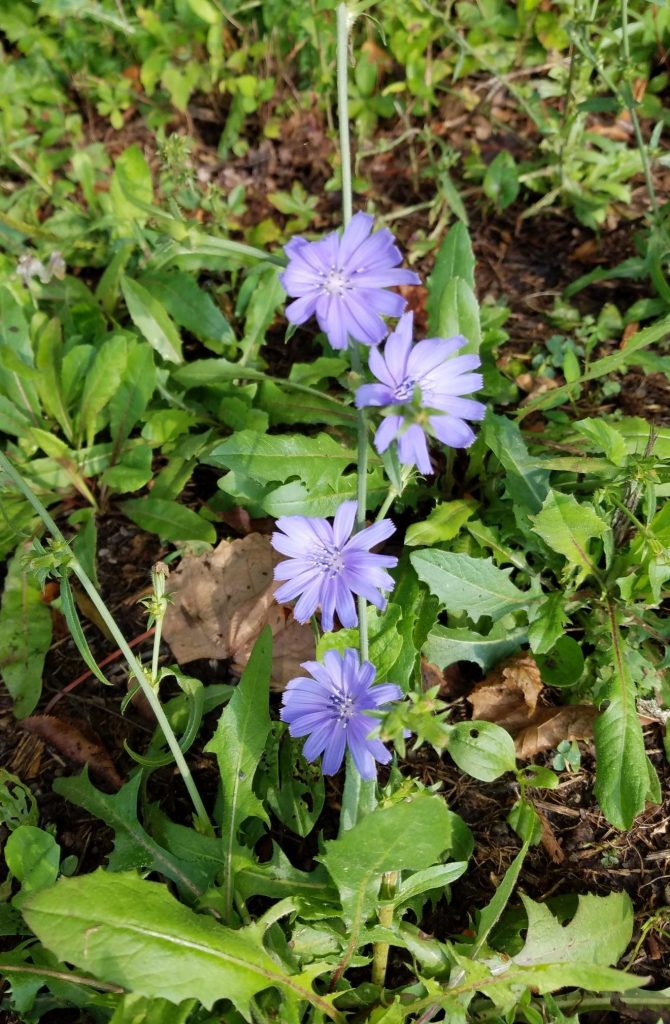
Chicory has had many uses throughout its history…sweetener, source of dietary fiber, coffee substitute and enhancement, food, medicine. It also has anti-parasitic properties when used as forage for farm animals. Quite a few varieties of our common chicory plant have been created over the centuries. Have you eaten radicchio in a salad lately? Surprise! It’s a variety of our common Blue Chicory!
